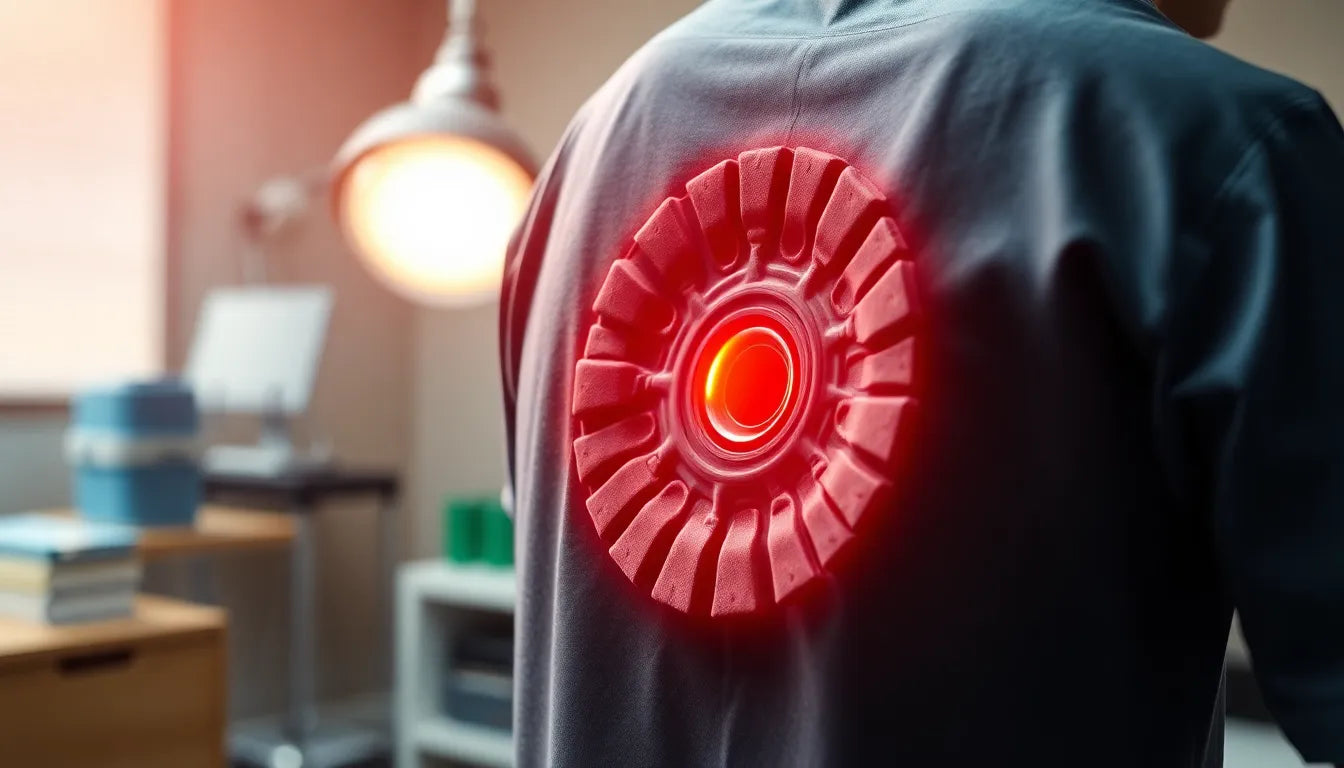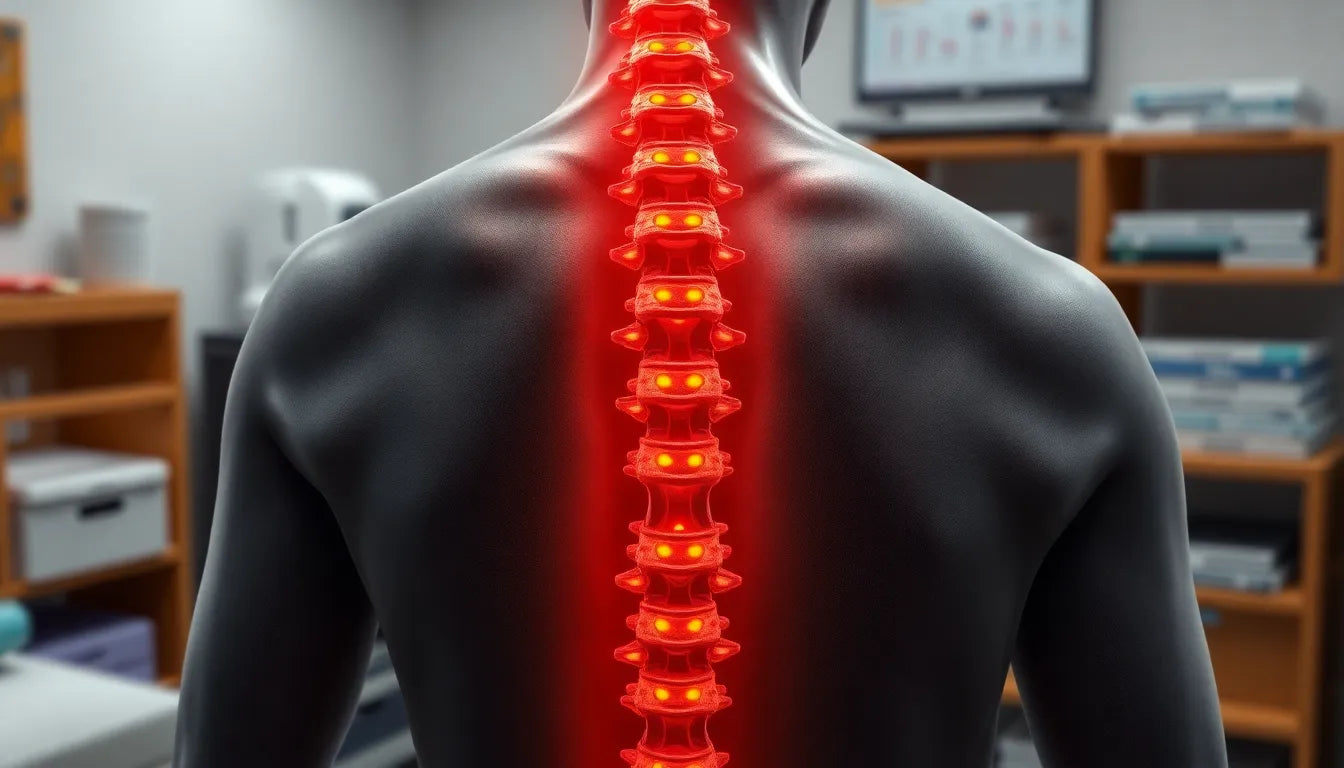Dealing with a herniated disc, particularly in the L5-S1 region of the spine, can be a daunting experience. This specific area, located at the base of the lumbar spine where the lower back meets the sacrum, plays a crucial role in supporting the upper body's weight and enabling a wide range of movements. Understanding the anatomy and function of this region is essential for grasping why issues such as herniated discs occur and how they can impact daily life.
Understanding the L5-S1 herniated disc
The spine is composed of a series of vertebrae, cushioned by intervertebral discs that act as shock absorbers. These discs have a tough outer layer and a soft, gel-like interior. A herniated disc happens when the inner gel pushes through the outer layer, often due to wear and tear or sudden strain, leading to pressure on nearby nerves. The L5-S1 disc is particularly susceptible to herniation because of its location and the significant load it bears.
Common causes of herniated discs include aging, where the discs naturally degenerate, as well as injuries or repetitive stress from activities that involve heavy lifting or twisting. Early diagnosis and treatment of an L5-S1 herniated disc are crucial to prevent symptoms from worsening and to maintain mobility and quality of life.
Prevalence and impact
L5-S1 herniated discs are among the most common spinal issues, affecting a significant portion of the population. Studies suggest that up to 2% of individuals will experience a herniated disc at some point, with the L5-S1 region being a frequent site. The impact of this condition on daily life can be profound, often leading to difficulties in performing everyday tasks, decreased mobility, and a reduction in overall quality of life.
For many, the pain and discomfort associated with an L5-S1 herniated disc can be debilitating, affecting their ability to work, exercise, or even enjoy leisure activities. Understanding the symptoms and seeking timely medical intervention can help manage the condition effectively.
Symptoms overview
Recognizing the symptoms of an L5-S1 herniated disc is vital for early intervention. Common symptoms include lower back pain that may radiate down the legs, a condition known as sciatica. This pain is often accompanied by numbness and tingling sensations in the feet and toes, as well as leg weakness, particularly in the calf muscles. In some cases, individuals may experience sensory changes and difficulties with mobility, such as walking or standing for extended periods.
Severe symptoms, such as significant leg weakness or loss of bladder control, require immediate medical attention, as they may indicate more serious complications. By understanding these symptoms, individuals can seek the necessary medical care to prevent further deterioration and explore effective treatment options.
Conservative treatments for L5-S1 herniated disc
When addressing an L5-S1 herniated disc, many healthcare professionals recommend starting with conservative, non-surgical treatments. These approaches aim to alleviate pain and improve functionality without the need for invasive procedures.
Rest and activity modification
During acute pain phases, it is crucial to allow the body to rest. Short periods of bed rest can help reduce inflammation and give the affected area time to heal. However, prolonged inactivity is discouraged as it can lead to muscle weakness and stiffness. It's important to avoid movements that exacerbate pain, such as heavy lifting or twisting. Learning proper body mechanics is essential to prevent further injury and support recovery. This includes techniques like bending at the knees instead of the waist and maintaining a neutral spine during activities.
Physical interventions
Physical therapy plays a significant role in managing an L5-S1 herniated disc. A physical therapist can design a tailored exercise program to strengthen the muscles supporting the spine, improve flexibility, and reduce pain. Techniques may include specific exercises, ultrasound therapy, and massage. Additionally, chiropractic care can help realign the spine and relieve pressure on the nerves. Alternating heat and cold therapy is also beneficial, as it can reduce inflammation and promote healing.
Medication management
Over-the-counter non-steroidal anti-inflammatory drugs (NSAIDs) like ibuprofen or naproxen can help manage pain and reduce inflammation. In some cases, muscle relaxants may be prescribed to alleviate muscle spasms. For more severe pain, doctors might recommend stronger pain medications, but these are typically used for short periods due to potential side effects.
Lifestyle factors
Several lifestyle factors can influence the recovery process. Staying hydrated by drinking 3-4 liters of water daily aids in maintaining disc hydration and overall spinal health. Adequate sleep is crucial, as it allows the body to repair and regenerate tissues. Maintaining a healthy weight reduces stress on the spine, and incorporating a balanced diet supports overall health and recovery.
Surgical interventions for L5-S1 herniated disc
While most cases of L5-S1 herniated discs can be managed with conservative treatments, surgery may be necessary when these methods fail to provide relief. Understanding the hierarchy of surgical options and when they become necessary is crucial for patients considering this route.
Hierarchy of surgical options
The most common surgical procedure for a herniated disc is a microdiscectomy, which involves removing the herniated portion of the disc to relieve pressure on the nerves. This procedure is minimally invasive and accounts for approximately 90% of herniated disc surgeries. Other surgical options include laminectomy, where part or all of the lamina is removed to relieve pressure, and foraminotomy, which enlarges the nerve root opening. In some cases, a facetectomy may be performed to trim facet joints and relieve compression.
Endoscopic discectomy is a minimally invasive procedure that uses an endoscope to remove the herniated disc material. For more complex cases involving spinal instability, lumbar interbody fusion may be considered, where the L5-S1 vertebrae are fused together to provide stability.
When surgery becomes necessary
Surgery is typically considered when conservative treatments fail to alleviate symptoms after several weeks or if there is significant nerve damage, such as severe leg weakness or loss of bladder control. The expected outcomes of surgery are generally positive, with many patients experiencing significant pain relief and improved function. Recovery timelines vary depending on the procedure, but most patients can expect to resume light activities within a few weeks and fully recover within a few months.
Understanding the options available for managing an L5-S1 herniated disc empowers patients to make informed decisions about their treatment path. Whether through conservative methods or surgical intervention, addressing this condition promptly can significantly improve quality of life.
Recovery timeline and expectations
Recovering from an L5-S1 herniated disc varies significantly among individuals, depending on the severity of the condition and the treatment approach. For those opting for conservative treatments, the recovery timeline can extend up to 12 weeks. Younger patients often experience faster healing due to better tissue regeneration capabilities. It's important for patients to follow personalized recovery plans that may include physical therapy, lifestyle adjustments, and regular medical check-ups to monitor progress.
For those who undergo surgical intervention, recovery times can vary based on the specific procedure performed. A microdiscectomy, for example, often allows patients to resume light activities within 1-2 weeks, with full recovery expected around six weeks post-surgery. Regardless of the treatment path, ongoing care is crucial to ensure long-term health and prevent recurrence.
Content angles and patient education
Providing comprehensive information on L5-S1 herniated disc management involves various content angles that cater to different needs and preferences. A medical resource approach focuses on delivering clinical, authoritative information, detailing a clear progression from conservative to surgical treatments. This approach is beneficial for those seeking in-depth understanding and guidance on their condition.
Alternatively, a patient-centered educational approach emphasizes practical advice for daily management and self-care strategies. This includes tips on ergonomics, exercises, and lifestyle modifications that can help manage symptoms effectively. By empowering patients with knowledge, they can take an active role in their recovery process.
Lastly, a holistic care approach highlights the importance of non-invasive treatments and integrated care. This perspective encourages patients to explore a combination of therapies that address both the symptoms and underlying causes of their condition, promoting overall well-being.
Frequently Asked Questions
What causes an L5-S1 herniated disc?
An L5-S1 herniated disc can result from various factors, including age-related degeneration, injury, or repetitive strain. The disc's outer layer may weaken over time, allowing the inner gel to push through and exert pressure on nearby nerves, leading to pain and other symptoms.
How is an L5-S1 herniated disc diagnosed?
Diagnosis typically involves a combination of physical examinations and imaging tests. A healthcare provider may conduct a physical exam to assess symptoms and range of motion, while an MRI scan can provide detailed images of the spine to confirm the presence and extent of a herniated disc.
What are the risks of not treating a herniated disc?
Failing to treat a herniated disc can lead to chronic pain, worsening symptoms, and potential nerve damage. In severe cases, it may result in permanent loss of mobility or control over bladder and bowel functions, significantly impacting quality of life.
Can lifestyle changes alone manage the condition?
While lifestyle changes, such as maintaining a healthy weight, staying active, and practicing good posture, can play a crucial role in managing symptoms, they are often most effective when combined with medical treatments. A comprehensive approach that includes physical therapy and medication management may yield the best results.
Is surgery always necessary for an L5-S1 herniated disc?
Surgery is not always necessary and is typically considered a last resort when conservative treatments fail to alleviate symptoms. Most patients experience significant improvement through non-surgical methods. Surgery may be recommended if there is severe nerve involvement or persistent pain that affects daily activities.


















